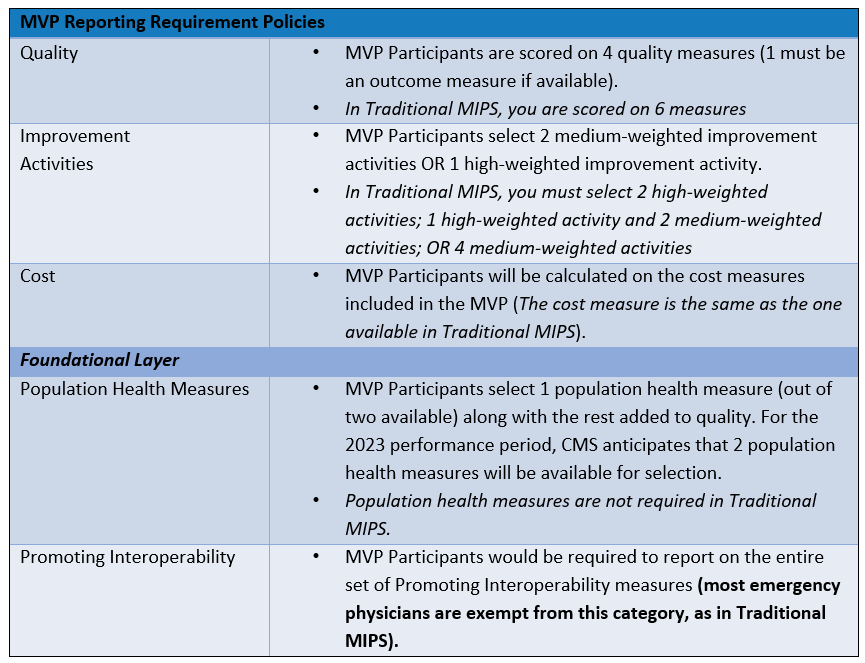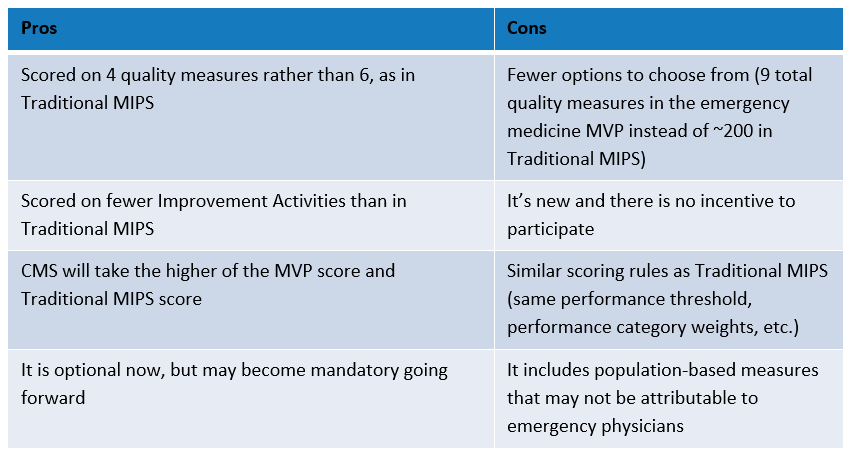Happy Thanksgiving everyone! Thanksgiving is one of my favorite holidays, as it is a time to celebrate what we are truly thankful for: our friends and family. It is also the unofficial beginning of the winter holiday season, which culminates with the start of a fresh new year.
It is that new year, 2023, where I want to focus my attention—since 2023 is a big year for the Merit-based Incentive Payment System (MIPS)!
As a reminder, the Quality Payment Program (QPP), established by the Medicare Access and CHIP Reauthorization Act (MACRA) of 2015, includes two tracks: MIPS and Advanced Alternative Payment Models (APMs). MIPS includes four performance categories: Quality, Cost, Improvement Activities, and Promoting Interoperability (formerly Meaningful Use). Performance on these four categories (which are weighted) roll up into an overall score out of 100 points that translates to an upward, downward, or neutral payment adjustment that providers receive two years after the performance period (for example, performance in 2023 will impact Medicare payments in 2025). Those who successfully participate in Advanced APMs can receive a five percent bonus and are exempt from MIPS. However, the last year a clinician can receive a bonus under current law is 2024, based on the clinician’s participation in the Advanced APM in 2022. Most of you as emergency physicians do not participate in Advanced APMs, and therefore must meet the MIPS requirements.
Since MIPS performance periods run for the full calendar year, the time to start thinking about how you will participate in MIPS in 2023 is NOW. That way, you are ready to go on January 1st! And it is important to remember that MIPS participation can have a significant impact on your overall revenue! The maximum negative payment adjustment in 2025 (based on performance in 2023) is a reduction of 9 percent on all Medicare covered professional services, and the positive payment adjustment can be up to 9 percent. Since MIPS is a budget neutral program, the size of the positive payment adjustments is ultimately controlled by the amount of money available through the pool of negative payment adjustments. In other words, the 9 percent positive payment adjustment can be scaled up or down (capped at a factor of + 3 percent). In the first few years of the program, most clinicians qualified for a positive payment adjustment, so the size of the adjustment was relatively small. For example, if a clinician received a perfect score of 100 in 2020, the clinician only receives a positive adjustment of 2.3 percent in 2022 (much less than the 9 percent permissible under law). However, CMS expects that many more clinicians will receive a downward payment adjustment next year (a third of all clinicians in 2025 based on performance in 2023!). Thus, the maximum bonus for achieving a perfect score in the 2023 performance period is projected to be 6.09 percent.
So, what’s new in MIPS in 2023, and how can you be successful?
Well, the 2023 performance year is the first year of a new reporting option in MIPS called the MIPS Value Pathways (MVPs). MVPs represent an approach that will allow clinicians to report on a uniform set of measures on a particular episode or condition in order to get MIPS credit. ACEP developed an emergency medicine-focused MVP that the Centers for Medicare & Medicaid Services (CMS) will be including in the first batch of MVPs starting in 2023.
Reporting an MVP is supposed to represent a more streamlined, less burdensome, and more meaningful experience than reporting traditional MIPS measures (Traditional MIPS). MVP reporting is an optional alternative to Traditional MIPS reporting in 2023 and includes slightly different requirements (although the same scoring rules) than Traditional MIPS:

For more information about MVPs and the emergency medicine MVP, you can review this presentation that highlights the key aspects of MVPs and the final MVP policies.
While ACEP is excited about the implementation of this MVP, the Adopting Best Practices and Promoting Patient Safety within Emergency Medicine MVP, we understand that many of you may be skeptical about trying something new next year. Due to the COVID-19 public health emergency, hardship exemptions have been in place for the 2019, 2020, 2021, and 2022 MIPS performance periods. Therefore, for some of you, 2023 may be the first time you participate in MIPS in four years—and you may not be willing to take a potential risk and try a different method for reporting in MIPS. CMS also maintains a high performance threshold (the point score out of 100 you need to achieve to avoid a penalty and receive a bonus) of 75 points in the 2023 performance year, meaning that you have to perform extremely well across the different categories of MIPS to receive any type of bonus and avoid a penalty.
ACEP recognized these potential, and understandable, reactions from you all, and therefore recommended the following to CMS to encourage participation in MVPs:
- Create More Incentives for Participating in MVPs: ACEP believes that there should be some additional incentives for initially participating in an MVP over traditional MIPS. ACEP strongly recommended that CMS include at least a five-point bonus for participating in an MVP initially. Clinicians who participate in MVPs should also be held harmless from any downside risk for at least the first two years of participation.
- Eliminate the Foundational Layer:MVPs include a “foundational layer” of population-based claims measures. ACEP believed that measures that should be included in MVPs are only those that have been developed by specialty societies to ensure they are meaningful to a physician’s particular practice and patients and measure things a physician can actually control.
Despite our recommendations, CMS did not ultimately decide to modify the incentive structure for MVPs in 2023. ACEP was however able to get clarification from CMS that clinicians can report both MVP measures and traditional MIPS measures, and CMS will take the higher of the two scores.
Therefore, given that the 2023 policies are now finalized, ACEP has boiled down the pros and cons of participating in MVPs to be the following:

Overall, given these pros and cons, ACEP’s recommendation is for you to consider reporting both MVP and traditional MIPS. Since CMS takes the highest of the two scores, the pros seem to outweigh the cons in terms of risk. In other words, we believe that reporting both MVP and Traditional MIPS measures may give you the greatest chance of receiving a high MIPS performance score and at the same time help prepare you for the future when MVP participation could be mandatory. However, you definitely need to do what is best for your individual practice and keep in mind the time and cost associated with reporting additional measures.
To participate in the MVP, you will need to register for the MVP on the QPP website any time between April 1 and November 30, 2023. ACEP will help you with the registration process as we get closer to that date. Registering for the MVP means that CMS expects you to try to meet the MVP reporting requirements, but you are still able to report other measures as well.
Decisions about MIPS participation, including whether to report the emergency medicine MVP measures, may seem daunting, but remember that ACEP is here to help! One way to maximize your performance is to participate in ACEP’s registry, the Clinical Emergency Data Registry (CEDR). CEDR will support the emergency medicine MVP in 2023 and can work with you and your practice to figure out the right reporting strategy and improve your performance. ACEP’s Regulatory and Quality teams can also support you and answer any questions you may have.
And on that note, again, have a happy Thanksgiving!! Until next week, this is Jeffrey saying, enjoying reading regs with your… turkey legs.






